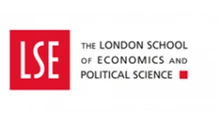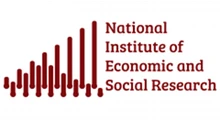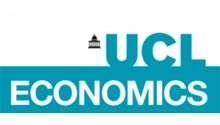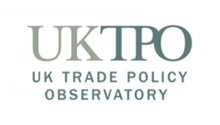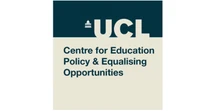The May 2025 ‘reset’ between the European Union and the UK addresses frictions that have emerged as a result of Brexit. The economic effects may be somewhat limited, but the agreement reflects political realities and brings stability at a time of heightened global uncertainty.
The summit meeting of the European Union (EU) and the UK held at Lancaster House in May 2025 marked a symbolic thaw in post-Brexit relations. The event brought together EU leaders (including European Commission president Ursula von der Leyen, European Council president António Costa, high representative of the EU for foreign affairs and security policy Kaja Kallas, and trade commissioner Maroš Šefčovič) with prime minister Keir Starmer and other representatives of the UK government.
While political rhetoric focused on a desire to ‘broaden and deepen’ cooperation – particularly in areas like defence, energy and youth mobility – the economic implications of this so-called reset appear modest.
This article outlines the key areas of engagement, the potential economic impact and the political constraints shaping UK-EU economic relations.
Trade
The largest potential economic benefits lie in easing trade frictions that have arisen since the UK’s departure from the EU’s single market and customs union.
UK goods exports have been persistently weak in recent years, and there is a general consensus that, at least in part, this is the result of Brexit and the consequent increase in effective trade barriers between the UK and the EU.
In reality, these frictions stem primarily from structural choices made by the UK government in the 2021 trade and cooperation agreement (TCA), which set hard limits on regulatory alignment and market access, even while ensuring that no tariffs were in place.
Sanitary and phytosanitary measures
The prospect of a new agreement on sanitary and phytosanitary (SPS) rules – those related to food safety and disease prevention among animals and plants – has received considerable attention. Current SPS barriers are particularly burdensome for agri-food exporters and their removal could streamline UK-EU trade in this sector.
Such agreements are highly technical and time consuming, and we can expect arguments about whether the UK is permitted any flexibility when it comes to the need to align automatically with changing EU standards. While such an agreement would be very welcome to the sector, empirical assessments suggest that any macroeconomic gains would be small.
Fish
The most concrete outcome of the summit was an agreement to extend the current arrangements for allocating fishing rights, agreed alongside the TCA, for a period of 12 years.
While this was presented as a betrayal by some in the UK – often by those who had endorsed the original agreement – the net impact of the reset is still likely to be positive for the fishing sector.
The industry will benefit from any agreement on SPS, as the current regime has made exporting to the EU more difficult. Still, given the sector’s size – about 0.04% of UK GDP – the overall economic impact will be very small.
Mutual recognition of conformity assessment
A much larger prize in economic terms would be mutual recognition of conformity assessments – essentially, agreement that regulatory bodies on one side of the Channel could certify that products meet the regulatory specifications required for products to be exported to the other side.
In opposition, Rachel Reeves had signalled a willingness to negotiate a ‘bespoke’ deal for chemicals, implying UK interest in aligning with EU rules in return for improved market access (‘integration’ in the language coined by UK in a Changing Europe, UKICE), rather than ‘replication’).
One study estimates that a mutual recognition agreement (MRA) on conformity assessment could increase UK goods exports to the EU by 10% on average, and up to 25% in sectors like chemicals and machinery (Du et al, 2023).
But such MRAs are rare in EU trade policy, and they typically require deep trust and alignment. The London summit revealed that the EU was prepared to be flexible in areas like agriculture and energy, where it has an interest in removing trade barriers and there are important benefits to be had in terms of the status of Northern Ireland. But it also showed that when it comes to the UK, the EU remains wary of ‘cherry-picking’ – granting access to parts of the single market without broader commitments.
Services
The TCA contains limited provisions on services, and there is little indication that this will change under the current political conditions. Regulatory divergence and the absence of passporting rights continue to constrain financial services in particular.
The summit offered no new developments on trade in services, despite the sector accounting for around 80% of the UK economy. Services trade has shown relative resilience post-Brexit, with many firms able to adapt and circumvent any new barriers.
Nevertheless, data on trade in services are notoriously unreliable, and some academic analyses present a mixed picture, suggesting that this resilience may have come at a cost in some sectors.
Energy cooperation
The Lancaster House talks confirmed mutual interest in UK participation in the EU’s single energy market and in linking the EU and UK emissions trading schemes (ETS) – cap-and-trade mechanisms to reduce greenhouse gas emissions.
These areas offer potential mutual gains: integration of electricity markets could reduce costs and enhance energy security, while linking ETS systems could lower compliance costs and improve carbon pricing efficiency.
Negotiations on both fronts remain at an early stage. The TCA already enables technical energy cooperation, but full market participation would be likely to require stronger regulatory and institutional alignment – a hurdle not yet overcome.
Youth mobility
The EU proposed a reciprocal youth mobility scheme that would allow young people to live and work in each other's jurisdictions for limited periods. Leaders agreed to develop such a scheme at the summit, although the UK government has been extremely cautious.
This is both because it did not want to be seen as contemplating any return to free movement (although a limited scheme would clearly be much closer to already existing arrangements with Australia, India and other countries than to the pre-Brexit free movement rules) and because it might boost net migration.
While politically sensitive, labour mobility has measurable economic benefits. The loss of free movement has contributed to labour shortages in some sectors and has arguably reduced labour market flexibility.
Defence and security cooperation
Defence cooperation was a headline outcome of the summit. Although the details remain vague, the UK has signalled a desire to participate more closely in EU defence initiatives, including the European defence fund and the permanent structured cooperation (PESCO) initiative for greater collaborative capability in defence.
Economically, defence spending tends to have mixed effects. While it can stimulate industrial capacity and innovation (especially in dual-use technologies), the opportunity cost – relative to investment in education, health or infrastructure – also needs to be taken into account.
Nevertheless, it does seem highly probable that there is considerable scope for efficiencies in current and future defence spending in both the UK and the EU. As a result, there is clear potential for some benefits, although this is very difficult to quantify.
Overall economic impacts
The government estimates that the impact of the SPS agreement and cooperation on energy will boost UK GDP by about 0.3% by 2040. But how should we measure that?
The effect is clearly much smaller than consensus estimates of the negative economic impact of Brexit, originally assessed at 4% of GDP by the Office of Budget Responsibility (OBR), although this remains controversial (plausible estimates of the damage so far range from perhaps 1% to 5% of GDP).
This is hardly surprising given that the reset, even if successfully implemented, reverses only a small fraction of the additional trade barriers that have emerged as a result of Brexit. Nevertheless, the benefit compares favourably with the impact of other trade deals negotiated by the UK (for example, the UK-India free trade agreement is expected to have about half the impact).
The figure is also comparable to pre-summit expectations – for example, the Centre for European Reform estimated a potential impact of 0.3% to 0.7%, with the difference between this and the government estimate accounted for by a youth mobility scheme (the government estimate does not include this).
Political red lines, economic constraints
The limited scope of the summit’s economic implications reflects enduring political red lines on both sides. For the UK, sovereignty over regulation and migration remains a central constraint, precluding re-entry into the single market or customs union. For the EU, the integrity of the single market remains non-negotiable.
As a result, UK-EU relations may have entered a new, more stable equilibrium – but one characterised by acceptance of mutual frictions rather than their resolution. This political settlement reflects political feasibility more than economic optimality, consistent with models of second-best policy outcomes under constraint.
Nonetheless, the diplomatic reset may have value beyond economics. In an era of geopolitical uncertainty, closer security cooperation – while unlikely to yield large GDP gains – may prove strategically significant in the long run.
Where can I find out more?
- The Brexit files: from referendum to reset: A comprehensive assessment of Brexit, the impact on the EU and the UK, and key issues in future EU-UK relations.
- PM secures new agreement with EU to benefit British people: Official government announcement of the reset deal.
- A few important steps forward: the UK-EU strategic partnership: An assessment of the deal by the UK Trade Policy Observatory (UKTPO).
- The EU and UK trade reset: where do we go from here? A UKICE article looking at possible future developments.
Who are experts on this question?
- Thomas Sampson (LSE)
- Jonathan Portes (KCL)
- Sarah Hall (Cambridge)
- Jun Du (Aston)

















